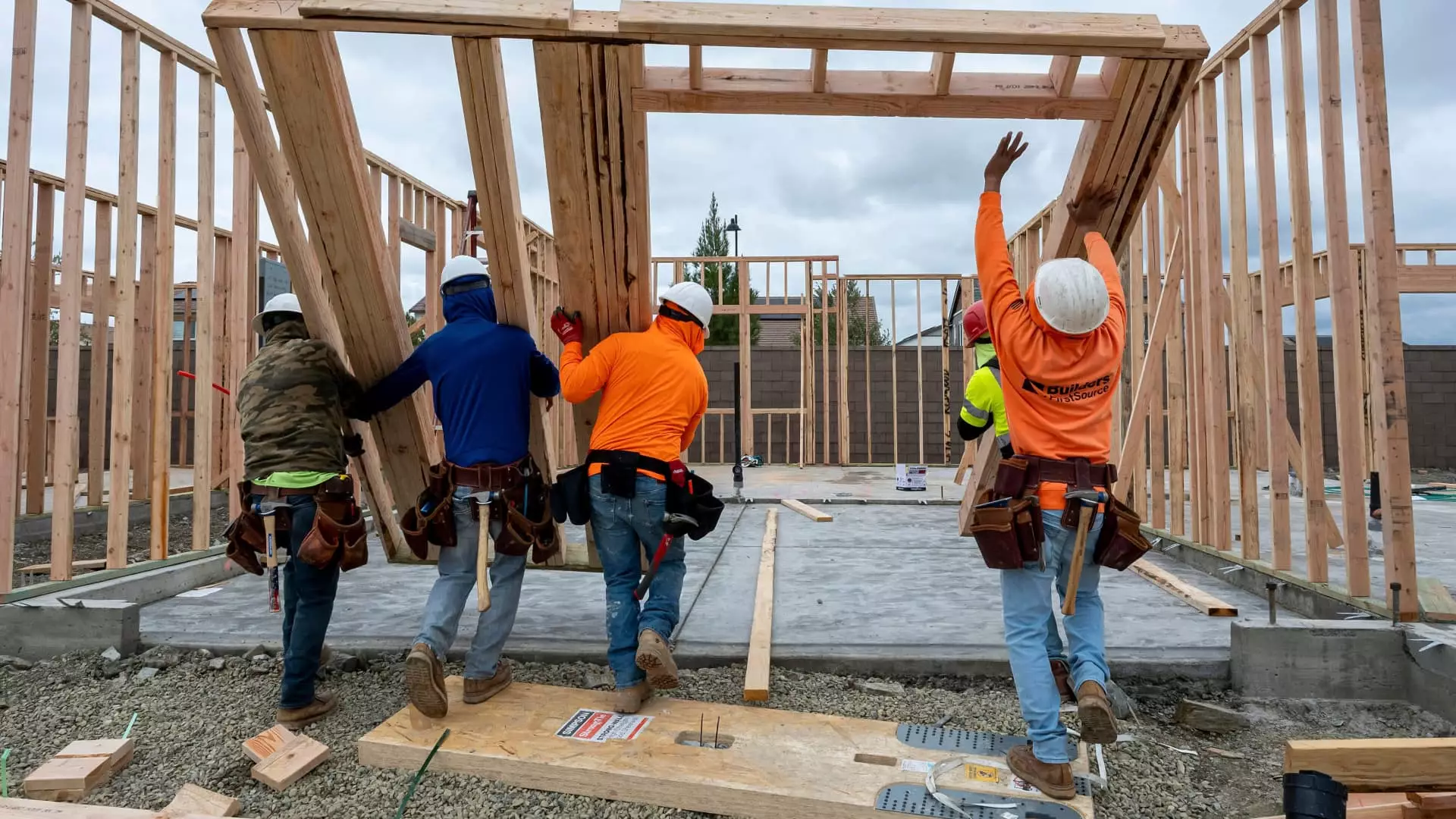It’s hard to overstate the malaise currently engulfing the housing market. As higher mortgage rates persist and economic insecurity festers, the National Association of Home Builders’ (NAHB) Housing Market Index (HMI) has reported a disheartening dip in builder sentiment. June figures show a drop of two points to a gloomy score of 32, reflecting a continuing trend toward pessimism. To frame it more starkly, this index has only registered lower levels than those seen in June 2024 on two previous occasions since 2012. Such statistics portray a landscape rife with trepidation—an unfortunate reality for builders and potential homeowners alike.
The economic backdrop is far from supportive. Analysts had pinned their hopes on a minor recovery based on tariff negotiations and recent policy shifts from the Trump administration. Instead, the situation has deteriorated, highlighting the unpredictability of current market conditions. With an index reading below 50 regarded as negative, the plight of homebuilders raises distressing questions about what the future holds.
A Shift Toward Caution Among Builders
A deeper dive into the HMI reveals several troubling components. The current sales conditions fell to 35, while expectations for the next six months have also dimmed to 40. These numbers suggest that builders are not only grappling with low demand but are also wary of potential sales declines moving forward. This cautious sentiment is echoed by Buddy Hughes, NAHB chairman and a homebuilder in Lexington, North Carolina. His acknowledgment that buyers are retreating due to high mortgage rates and economic uncertainty strikes a particularly disquieting note.
Perhaps most alarming is the statistic revealing that 37% of builders reported cutting prices in June, the highest percentage since such tracking began. This escalation in price reductions underscores the desperation felt among builders, who recognize the mounting challenges posed by the rapidly evolving financial landscape. The average price cut has hovered around 5%, reinforcing the financial strain and diminished purchasing power of consumers.
Impacts on Affordability and Consumer Confidence
The connection between escalating mortgage rates and dwindling buyer confidence can’t be overstated. Rising inventory levels and the prolonged hesitance of prospective homebuyers to enter the market have manifested in stagnating price growth—a scenario that breeds further cynicism. “Weaker conditions are embedding themselves into the very fabric of the market,” notes Robert Dietz, chief economist at the NAHB. His forecast of a decline in single-family home starts for 2025 indicates a contraction that could have far-reaching implications on the overall economy.
The macroeconomic variables at play are creating a perfect storm for builders and buyers alike. With rising inventory and affordability concerns looming large, the hope for a recovery in housing prices appears increasingly illusory. The data suggests that these challenges are not merely transitory; rather, they represent a systemic issue that requires more than temporary measures.
Market Reactions and Consequences
The ramifications of this shaken builder sentiment extend beyond mere statistics. Major builders like Lennar find themselves navigating treacherous waters, as evidenced by their recent earnings report indicating an almost 9% drop in average home prices compared to prior quarters. The dissonance between rising interest rates and declining consumer confidence forces companies to lower prices to stimulate sales, creating a vicious cycle that further depresses home values.
Regional disparities also emerge from the data. The South and West, where the majority of new homes are constructed, report the weakest builder sentiment, which could indicate deepening troubles in parts of the nation that might have once enjoyed robust growth. As these two key markets struggle, the implications extend nationwide, indicating a ripple effect that could lead to broader economic instability.
A Shift Toward Pragmatism in the Housing Sector
In the face of these challenges, a pragmatic approach may be necessary for both builders and policymakers. While the current environment may appear bleak, it underscores the need for innovative strategies that could restore affordability and consumer confidence. Homebuilders might need to pivot their business models, acknowledging that aggressive price-cutting may be insufficient in resolving deeper economic uncertainties.
As we grapple with these issues, it becomes increasingly clear that solutions must be multifaceted. Only by addressing the core challenges of affordability, economic stability, and consumer sentiment can we hope to transform this nascent crisis into a recovery journey. The stakes are high—not just for builders but for potential homeowners, the economy, and society as a whole. The future of housing will depend largely on our collective ability to adapt and respond proactively to these pressing economic realities.

